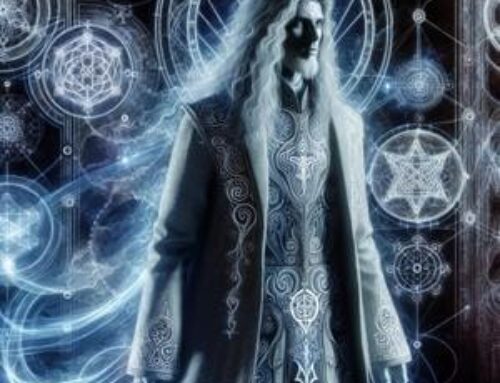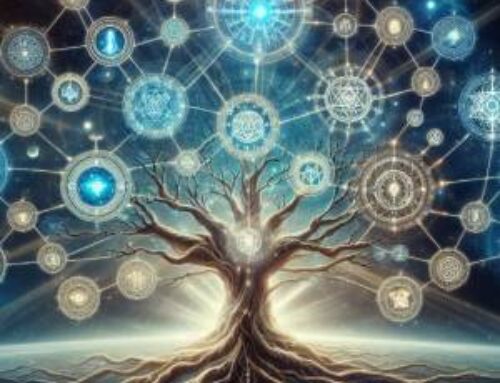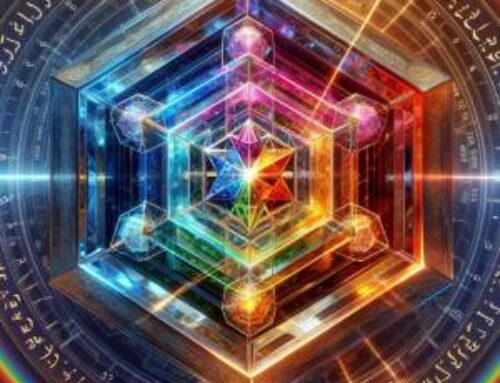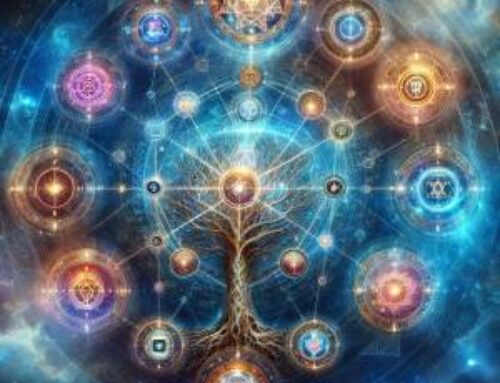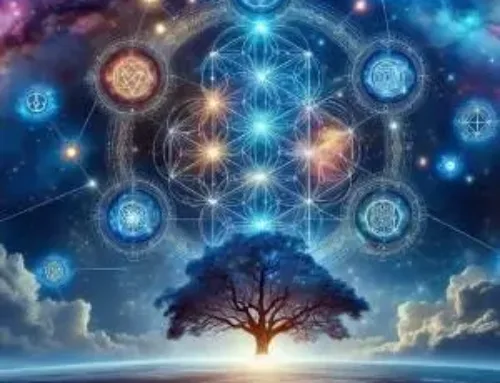Contents
- 1 Introduction
- 2 The Landscape of Modern Spiritual Literature
- 3 Elias Rubenstein’s Contribution
- 4 Rosicrucianism and Kabbalah: A Symbiotic Relationship (300+ words)
- 5 Rosicrucian Kabbalah Books: The Symbolism in Rosicrucian Manifests
- 6 Conclusion
- 7 FAQ – Rosicrucian Kabbalah Books
- 7.1 1. What is the significance of Rosicrucianism and Kabbalah in modern spirituality?
- 7.2 2. Why are authentic Rosicrucian kabbalah books rare?
- 7.3 3. How can I start studying Rosicrucianism and Kabbalah?
- 7.4 4. Can Rosicrucian and Kabbalistic teachings impact my daily life?
- 7.5 5. Are Rosicrucianism and Kabbalah compatible with other spiritual paths?
- 7.6 6. How can I contribute to the global awakening mentioned in Rosicrucian kabbalah books?
- 8 References:
Introduction
In an age where the pursuit of spiritual depth seems more like navigating through a labyrinth, the quest for genuine rosicrucian kabbalah books feels increasingly arduous. Amidst the plethora of spiritual texts that flood our modern bookshelves, the scarcity of authentic rosicrucian kabbalah books connected with Rosicrucian insights stands out starkly. This rarity underscores not just a gap in spiritual literature but highlights a profound thirst for the sacred wisdom that these traditions offer.
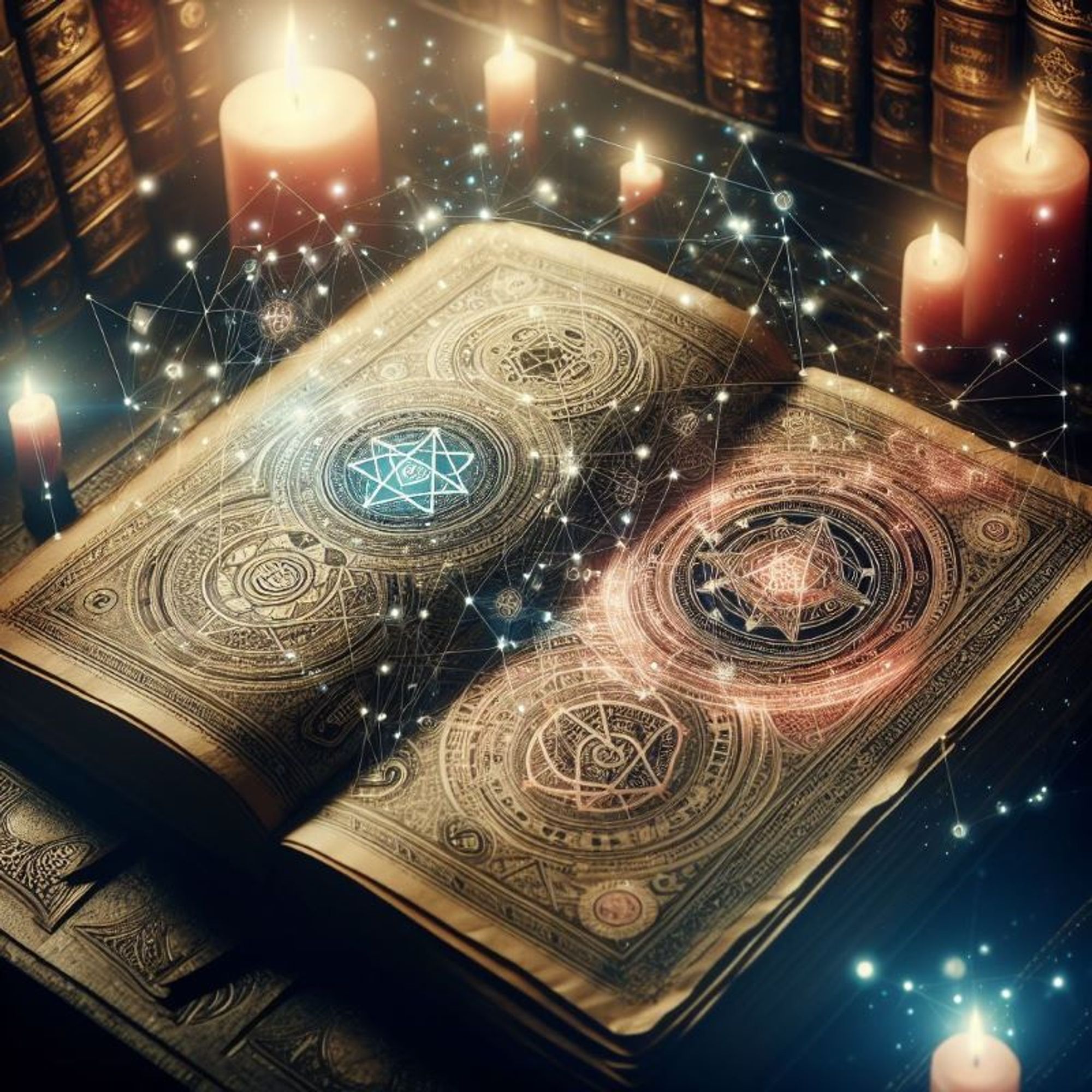
Kabbalah, with its intricate web of mystical interpretation and deep, symbolic understanding of the universe, combined with the rich, historical tapestry of rosicrucian kabbalah books presents a path not just to spiritual knowledge, but to a transformative way of living (1). Yet, navigating this path requires access to sources that are not only rooted in the true essence of these rosicrucian kabbalah books but are also accessible to the contemporary seeker. Among the few torchbearers of this legacy is the notable work, “Magic – Legacy of Rosicrucians,” offering a beacon of light to those wandering the spiritual desert in search of true wisdom.
As we embark on this exploration, it becomes imperative to recognize the unique place that Rosicrucian Kabbalah books hold in the landscape of spiritual literature.
The St. Petersburg collection of the ‘Hermetic Library’ is the largest literary heritage of Russian Rosicrucians, containing 191 works from Ancient Greece to the 18th century, and a history of writing and storage until the 20th century (2, 3).
They are not merely guides but gateways to understanding the profound interconnection between the self, the divine, and the cosmos. This article aims to shed light on the elusive realm of Rosicrucian and Kabbalistic wisdom, navigating through the symbolism, the teachings, and the profound impact they have on modern spiritual seekers.
The Landscape of Modern Spiritual Literature
In today’s digital age, the spiritual literature landscape is as vast as it is varied, presenting seekers with an array of choices that range from the profoundly insightful to the superficially enticing. Amidst this diversity, the quest for authentic rosicrucian kabbalah books stands out as a unique challenge, characterized by a discernible scarcity of texts that authentically connect to the ancient roots of these mystical traditions. This rarity is not merely a reflection of the complexity inherent in these paths but also an indication of the deep commitment required to genuinely engage with their teachings.
The proliferation of spiritual texts in the modern era, while offering unprecedented access to knowledge, also brings with it the risk of dilution and misinterpretation of traditional wisdoms. Many contemporary works offer simplified versions of complex spiritual concepts, making them more accessible but often at the cost of losing the depth and transformative potential of the original teachings. This trend is particularly evident in the realm of rosicrucian kabbalah books, where authentic texts that faithfully represent the intricacies of these paths are few and far between.
Rosicrucianism and Kabbalah, both rich in symbolism, allegory, and metaphysical teachings, demand a level of engagement that goes beyond mere intellectual curiosity. These paths offer a holistic approach to spiritual enlightenment, emphasizing the integration of wisdom into one’s daily life. However, navigating the extensive sea of available literature to find genuine sources of these teachings can be daunting. The challenge lies not only in discerning the authenticity of the texts but also in the willingness of the seeker to embark on a journey that is as demanding as it is rewarding.
The scarcity of authentic rosicrucian kabbalah books underscores a deeper issue within modern spiritual discourse: the commodification of ancient wisdoms. As spirituality becomes more mainstream, there is a growing tendency to package and sell ancient teachings in ways that appeal to contemporary sensibilities but often strip them of their essence. This commercialization risks turning profound spiritual paths into mere trends, thereby obscuring the transformative power at the heart of traditions like Rosicrucianism and Kabbalah.
Elias Rubenstein’s Contribution
Elias Rubenstein’s “Magic – Legacy of Rosicrucians” represents a seminal contribution to the modern spiritual landscape, bridging the ancient wisdom of Rosicrucianism and Kabbalah with the contemporary quest for meaning and enlightenment. In a time when genuine Rosicrucian kabbalah books are increasingly hard to discern amidst the myriad interpretations and adaptations, this work stands as a lighthouse, guiding seekers back to the authentic roots of these mystical traditions.
Rubenstein’s approach to the esoteric teachings of Rosicrucianism and Kabbalah is characterized by a deep reverence for their historical and symbolic richness. By weaving together the intricate threads of these ancient paths, he presents a coherent and comprehensive exploration that is both accessible and profound. This is no small feat, considering the complexity of the subjects at hand. Kabbalah, with its deep metaphysical insights into the nature of the divine and the structure of the universe, and Rosicrucianism, with its emphasis on inner transformation and enlightenment, both require a nuanced understanding that respects their depth and breadth.
What sets “Magic – Legacy of Rosicrucians” apart is its ability to transcend the purely theoretical, inviting readers into an experiential engagement with the teachings. Rubenstein’s Rosicrucian kabbalah books are not just texts to be read but guides to be lived. Through practical insights and exercises, he encourages seekers to apply the wisdom of Rosicrucianism and Kabbalah in their daily lives, thereby facilitating a transformative journey that leads to a deeper understanding of the self and the cosmos.
This hands-on approach is particularly relevant in today’s spiritual climate, where many are seeking not just knowledge, but pathways to personal and collective transformation. In this context, Rubenstein’s contribution is invaluable, offering a beacon of authenticity and depth in a sea of superficiality. His work serves as a reminder that the true power of Rosicrucian kabbalah books lies not in their esoteric knowledge alone but in their capacity to inspire change and growth.
Moreover, Rubenstein’s emphasis on the interconnectedness of all aspects of existence resonates deeply with contemporary concerns about the ecological, social, and spiritual crises facing humanity. By drawing on the holistic worldview inherent in Rosicrucian kabbalah books, “Magic – Legacy of Rosicrucians” offers insights into how these ancient wisdoms can inform and inspire solutions to modern challenges (4). This relevance to contemporary issues further underscores the importance of Rubenstein’s work, highlighting its significance not only as a source of spiritual knowledge but as a guide for navigating the complexities of the 21st century.
Rosicrucianism and Kabbalah: A Symbiotic Relationship (300+ words)
The symbiotic relationship between Rosicrucianism and Kabbalah weaves a complex tapestry of spiritual wisdom that has intrigued and guided seekers for centuries. This relationship is grounded in a shared vision of the universe as an interconnected and symbolic system through which the divine manifests and communicates. At the heart of both traditions lies the quest for gnosis – a deeper, experiential knowledge of the divine – which has positioned them as complementary paths on the journey toward spiritual enlightenment.
Rosicrucianism, with its origins shrouded in mystery and its teachings a blend of alchemical, Hermetic, and Christian mysticism, offers a path to understanding the laws of nature and the cosmos through symbols, rituals, and philosophical inquiry. Kabbalah, originating from Jewish mystical thought, explores the nature of the divine, the structure of the universe, and the soul’s journey through the Tree of Life. Both paths seek to unravel the mysteries of existence, using symbols and archetypes to guide the seeker through the layers of meaning that constitute the fabric of the cosmos.
The integration of Kabbalistic elements into Rosicrucian kabbalah books and practice is a testament to the deep resonances between these traditions. The Kabbalistic Tree of Life, with its sephirot or emanations, mirrors the Rosicrucian emphasis on the progression of spiritual awakening through various stages of enlightenment. This shared symbolism underscores a holistic view of spiritual development, where the journey of the soul is mapped onto the structure of the universe, reflecting the macrocosm within the microcosm of the individual seeker.
Furthermore, the emphasis on direct, personal experience of the divine in both Kabbalah and Rosicrucianism challenges the seeker to transcend beyond theoretical knowledge to a lived understanding of spiritual truths. This approach fosters a dynamic relationship with the spiritual path, where the teachings are not merely studied but are embodied and manifested in the seeker’s life.
The symbiotic relationship between Rosicrucianism and Kabbalah thus offers a rich framework for spiritual exploration and transformation. By drawing on the strengths of both traditions, seekers are provided with a multifaceted approach to understanding the mysteries of the divine and the universe. This relationship encourages a balanced development of both the intellect and the spirit, grounding mystical experiences in a framework of symbols and teachings that guide the seeker toward a deeper, more integrated understanding of their place within the cosmic order.
In this context, the intersection of rosicrucian kabbalah books serves as a fertile ground for spiritual growth and enlightenment. It offers a path that is both deeply rooted in ancient wisdom and adaptable to the individual’s journey, reflecting the diverse and evolving nature of the human quest for understanding and connection with the divine. This symbiotic relationship underscores the timeless relevance of these traditions, highlighting their continued significance in guiding seekers on their spiritual paths in the modern world.
Rosicrucian Kabbalah Books: The Symbolism in Rosicrucian Manifests
The rosicrucian kabbalah books are a treasure trove of symbolic knowledge, deeply imbued with Kabbalistic wisdom and insights. These rosicrucian kabbalah books, which have captivated the imaginations of seekers since their appearance in the early 17th century, are rich in allegory and esoteric symbolism, offering keys to understanding the deeper realities of the universe and the human soul’s journey towards enlightenment. The symbolic language used in these rosicrucian kabbalah books is not arbitrary but is carefully crafted to convey layers of meaning that invite deep contemplation and meditation.
At the core of Rosicrucian kabbalah books is the understanding that the physical world is a reflection of higher spiritual realities. This is a principle that resonates strongly with Kabbalistic teachings, which view the cosmos as a structured expression of divine emanations. The Rosicrucian kabbalah books make extensive use of symbols such as the rose and the cross, which are not merely decorative elements but are profound symbols of the union of the human with the divine, the interplay of temporal and eternal truths.
The rose, emblematic of the mysteries of nature and the unfolding of spiritual wisdom, is a symbol of the soul’s awakening to its divine origin and potential. The cross, representing the material plane and the challenges of earthly existence, symbolizes the crucible of transformation through which the soul evolves and ascends. Together, these symbols encapsulate the Rosicrucian path of initiation and spiritual growth, mirroring the Kabbalistic journey through the Tree of Life towards unity with the divine.
Moreover, the Rosicrucian kabbalah books are replete with references to alchemical processes, echoing the Kabbalistic theme of transformation. Alchemy, in this context, is not merely the transmutation of base metals into gold but is a metaphor for the soul’s purification and elevation through the stages of spiritual enlightenment. This alchemical symbolism, intertwined with Kabbalistic insights, provides a rich narrative framework for the seeker’s journey, offering guidance on the path to self-discovery and divine communion.
The symbolism in the Rosicrucian kabbalah books thus serves as a bridge between the material and the spiritual, the human and the divine. It invites the seeker to explore the depths of their being and the mysteries of the cosmos, guided by the light of ancient wisdom. This exploration is not a solitary journey but is supported by the collective insights and experiences of those who have walked the path before, offering a compass for navigating the challenges and opportunities of the spiritual quest.
In engaging with the symbolic language of the Rosicrucian kabbalah books, seekers are invited to participate in a living tradition that transcends time and space. This engagement opens up new dimensions of understanding and experience, enriching the seeker’s journey with a sense of connection to a deeper reality that underpins the visible world. The symbols act as gateways to profound spiritual truths, offering a map for the soul’s journey towards enlightenment and the realization of its divine potential.
Conclusion
In the vast expanse of spiritual exploration, the convergence of Rosicrucianism and Kabbalah presents a unique and profound path laden with ancient wisdom, symbolisms, and transformative teachings. The scarcity of authentic Rosicrucian kabbalah books that navigate these intricate terrains with fidelity underscores the preciousness of works that manage to bridge the cosmic with the personal, the ancient with the contemporary. Within this context, the notable absence of comprehensive Rosicrucian kabbalah books underscores the significance of texts like “Magic – Legacy of Rosicrucians,” which serves as a vital conduit to the esoteric wisdom encapsulated within these traditions.
This journey into the heart of Rosicrucian and Kabbalistic wisdom is not merely academic; it is a profound engagement with teachings that have the power to transform. It beckons the modern seeker to look beyond the superficial layers of existence and to delve into the depths of the self and the universe. This exploration is an invitation to experience a reality that is deeply interconnected, where every symbol, every ritual, and every teaching is a thread in the intricate web of cosmic consciousness. It is a call to awaken to the truth that lies within and all around us, guiding us toward enlightenment and unity with the divine.
In an age marked by materialism and existential searching, the teachings of Rosicrucianism and Kabbalah offer a beacon of hope and direction. They remind us that the quest for knowledge and understanding is not an external pursuit but an inward journey of transformation. This path challenges us to transcend our limitations, to dissolve the barriers between the self and the other, and to embrace a vision of reality that is holistic and sacred.
The scarcity of authentic Rosicrucian Kabbalah books thus becomes not merely a matter of bibliographic interest but a clarion call to seek, preserve, and disseminate the sacred wisdom that these traditions hold. It is an invitation to engage deeply with teachings that have the power to illuminate our paths and transform our lives. In this quest, we are reminded that the true essence of spirituality is not found in the accumulation of knowledge but in the lived experience of unity, compassion, and enlightenment.
Unlock the wisdom of Rosicrucianism and Kabbalah
Embark on a journey of enlightenment and discovery with the Hermetic Academy. Unlock the ancient wisdom of Rosicrucian kabbalah books, and find your path to spiritual transformation. Whether you’re a seeker of hidden knowledge, a student of mysticism, or simply curious about the mysteries of the universe, the Hermetic Academy offers courses, resources, and a community of like-minded individuals dedicated to exploring the depths of spiritual wisdom. Join us today, and take the first step towards unlocking the secrets of the ages, fostering personal growth, and contributing to a global awakening.
FAQ – Rosicrucian Kabbalah Books
1. What is the significance of Rosicrucianism and Kabbalah in modern spirituality?
Rosicrucianism and Kabbalah are ancient paths of wisdom that offer profound insights into the nature of the universe, the divine, and the human soul. Their teachings provide valuable guidance for personal transformation and spiritual enlightenment, making them highly relevant for those seeking deeper understanding and connection in today’s world.
2. Why are authentic Rosicrucian kabbalah books rare?
Authentic Rosicrucian kabbalah books are rare because these traditions are esoteric, meaning they are intended for a dedicated and prepared audience. The complexity and depth of these teachings require careful preservation and transmission, which limits their widespread dissemination.
3. How can I start studying Rosicrucianism and Kabbalah?
Beginning your study of Rosicrucianism and Kabbalah involves finding reputable sources of information and joining a community or school that offers structured learning, like the Hermetic Academy. Starting with foundational concepts and gradually delving deeper into the teachings is recommended for a comprehensive understanding.
4. Can Rosicrucian and Kabbalistic teachings impact my daily life?
Absolutely. Rosicrucian and Kabbalistic teachings offer practical wisdom for personal development, ethical living, and spiritual growth. By applying these teachings, individuals can experience profound transformations, leading to a more harmonious, purposeful, and enlightened life.
5. Are Rosicrucianism and Kabbalah compatible with other spiritual paths?
Yes, Rosicrucianism and Kabbalah are compatible with various spiritual paths. Both traditions emphasize universal principles that transcend specific religious or spiritual boundaries, allowing individuals to integrate these teachings into their personal spiritual practices.
6. How can I contribute to the global awakening mentioned in Rosicrucian kabbalah books?
Contributing to the global awakening involves personal transformation, ethical living, and actively participating in community and global initiatives that promote harmony, understanding, and spiritual growth. Engaging with teachings from the Hermetic Academy can provide guidance and support in making meaningful contributions to this collective journey.
References:
(1) Rubenstein, E. (2020). The Tree of Life: The Kabbalah of Immortality. Hermetic World, Paphos.
(2) Kondakov, Y. (2018). Petersburg Collection of the ‘Hermetic Library’ of N. I. Novikov as the Heritage of Russian Rosicrucians from Ancient Greece to the 18th Century. , 663-678. https://doi.org/10.28995/2073-0101-2018-3-663-678.
(3) Faggionato, R. (2001). From a Society of the Enlightened to the Enlightenment of Society: The Russian Bible Society and Rosicrucianism in the Age of Alexander I. Slavonic and East European Review, 79, 459 – 487. https://doi.org/10.1353/see.2001.0170.
(4) Rubenstein, E. (2023). Magic: The Legacy of the Rosicrucians. Hermetic World, Paphos.

